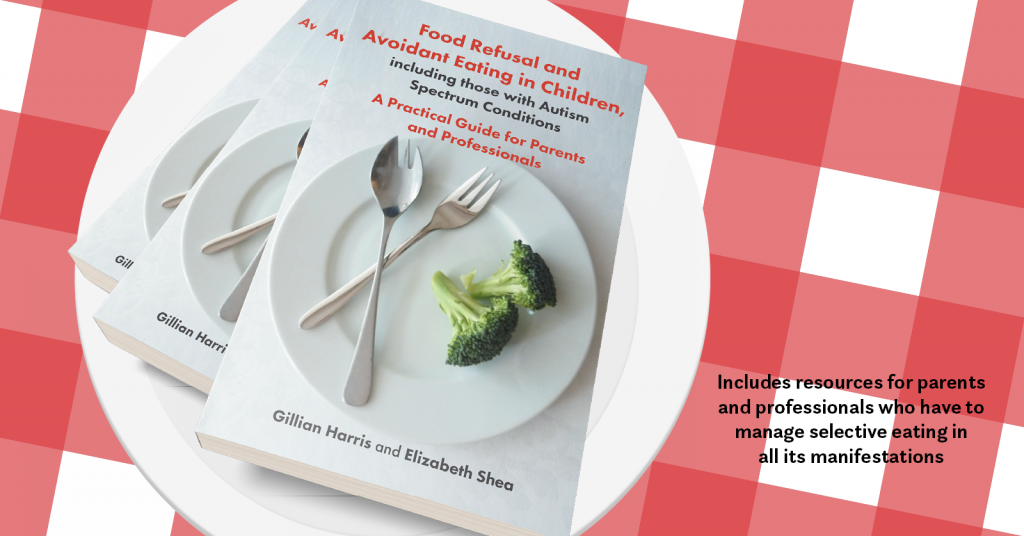Take note of these Five Top Tips for mealtimes from Dr Gillian Harris ahead of her new book, co-authored with Dr Elizabeth Shea, Food Refusal and Avoidant Eating in Children, including those with Autism Spectrum Conditions: A Guide for Parents and Professionals.
Fear of Food!
Having a child that doesn’t eat can be so very stressful for parents, – and of course for the child!
Most children are a bit fussy.
- Babies can be quite worried about touching slimy foods.
- Toddlers will suddenly refuse foods on sight that they might have eaten before,
- and no child likes anything with bits in it!
Children often grow out of these mild problems in mid-childhood.
But there are some children who are only able to eat just a few foods. They are not being naughty or difficult, they just have problems in the way that the brain learns to cope with new foods.
This extreme response now has a name:- Avoidant and Restrictive Food Intake Disorder – or ARFID – (DSM5); and is a recognised eating disorder. Children, and adults, show a fear of any food that isn’t in their ‘safe’ range – this is a fear that is very difficult to overcome and can last a lifetime. The foods that children with this problem usually eat are beige/brown, dry carbohydrates:-
- Bread
- Biscuits
- Chips
- Processed meat/ fish shapes
- Cereal
– plus some smooth yoghurts and chocolate. No mixed foods and nothing difficult to chew! This is because these foods have an easy texture to manage and children with this problem are very sensitive to the feel of food in the mouth.

If you have a child who very reluctant to eat, at any age, then here are some helpful tips – based on the experience of many despairing parents over the years.
1) Allow your child to have the foods that they like. This is not ‘giving in to them’, it means that they will be less anxious around food, and they will take in the right amount of food that they need to be able to grow.
2) Eat with your child. Have the food that you would like them to eat in sight, so that they can see and smell it, and most importantly see you eat it. This reduces fear of the new food.
3) Do as much sensory play as possible. Children with eating disorders are sensory sensitive, they over react to touch.
4) If your child does want to try new foods then the rules are :-
- Away from mealtimes
- With the least stressed parent
- Taste a very small piece of the food
- The child gets to choose the food, not you
- They can spit it out!
5) And a big ‘Try Not To’ –
bribe, coax, force, and withhold food to make them hungry.
We know from experience these don’t work!
If you would like to read more articles like this and get the latest news and offers on our books about autism, why not join our mailing list? We can send information by email or post as you prefer. You may also be interested in liking our Autism, Asperger’s and related conditions Facebook page.

Thank you for this brilliant book! I have read countless books on this subject but most are not helpful. I have two kids with autism/arfid with very different sets of feeding challenges. I feel like this book addressed both groups of challenges very well. Thank you for publishing a very informative book!